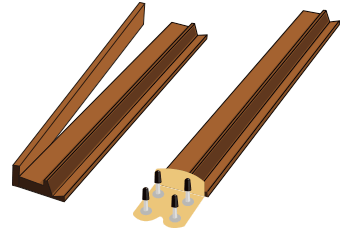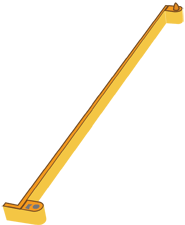| Mahjong is a game of both skill and luck that originated in China many centuries ago and was brought to the West in the 1920's with the publication of Joseph Park Babcock's "Rules of Mah-Jongg." American mahjong (also sometimes spelled "Mah Jongg" or called "Maajh") is unique from Asian mahjong in several ways. American mahjong utilizes racks, jokers, "Hands and Rules" score cards and has several distinct gameplay mechanics. Although an American mahjong set can be used to play Chinese Mahjong, the rules that follow are for the American game. Mahjong is always played with four players seated around a table. Tiles are shuffled, die are cast, and rituals involving the allocation of tiles and then the exchange of tiles begin. The first person to match a hand of 14 tiles and thus "call mahjong" ends the game, whereupon tiles are scored and a winner is declared. The excitement of mahjong lies in the decisions that you will constantly have to make. Is it preferable to discard a tile and thus gain an advantage, or would it be more prudent to stay with a decent hand? There is the exhilaration of winning a hand as well as regret at not having been bold enough to have made a different choice. Like poker, you will learn a lot about your opponents as you play mahjong and adjust your strategy according to their strengths and weaknesses. |
Table of Contents
EquipmentStarting The Game
Picking a Hand
The Charleston
Gameplay
Ending The Game
After The First Game
Additional Rules
Beyond The Basics - Online Mah Jongg Resources
National Mah Jongg League (NML). These score cards are published by the NML and updated annually. Each player keeps a card as reference for building hands and creating strategy.
Wind Indicators

Wind indicators come in different variations and are used to display the current wind (the player who starts off the round). The wind indicator is optional and not required for gameplay. It is also referred to as a better and is alternately used by a fifth person to place bets on which player will win. For wind indicators with only Chinese characters, the translations are as follows:
| 東 - East (E) 南 - South (S) 西 - West (W) 北 - North (N) |
Scoring Sticks and Coins
Scoring sticks or coins (round chips) are used to keep track of points and scoring. You can assign whatever point or monetary value you want to them and distribute in whatever quantity you want. The following is a suggested amount to be given to each player before the game starts:
| QUANTITY | SCORING STICK / COIN | VALUE |
| 1 | 9 dot / Yellow | 200 points |
| 2 | 5 dot / Blue | 100 points |
| 8 | 1 dot / Red | 25 points |
| 10 | 8 dot / Green | 5 points |
Racks and Pushers


Racks and pushers, while not mandatory, are highly recommended. Racks are assigned to each player to hold their hand of tiles. Alternately, you can line the tiles up on the table in front of you.
Pushers are "arms" that attach to each person's rack. They are very helpful when it's time to bring your portion of the wall to the center of the table for playing. Using a pusher also prevents you from accidentally exposing your hand while bringing your wall forward.


Racks and pushers, while not mandatory, are highly recommended. Racks are assigned to each player to hold their hand of tiles. Alternately, you can line the tiles up on the table in front of you.
Pushers are "arms" that attach to each person's rack. They are very helpful when it's time to bring your portion of the wall to the center of the table for playing. Using a pusher also prevents you from accidentally exposing your hand while bringing your wall forward.
Return to top
Return to top
Return to top
Return to top
Return to top
Return to top
Return to top
MahJonggMentor
MahJonggMentorprovides strategies to improve your skills with “easy to follow” videos, FAQs, etiquette suggestions, on-line community room and Ask The Expert. MahJonggMentorwas created for all levels of Mah Jongg players: beginner, intermediate and advanced.



